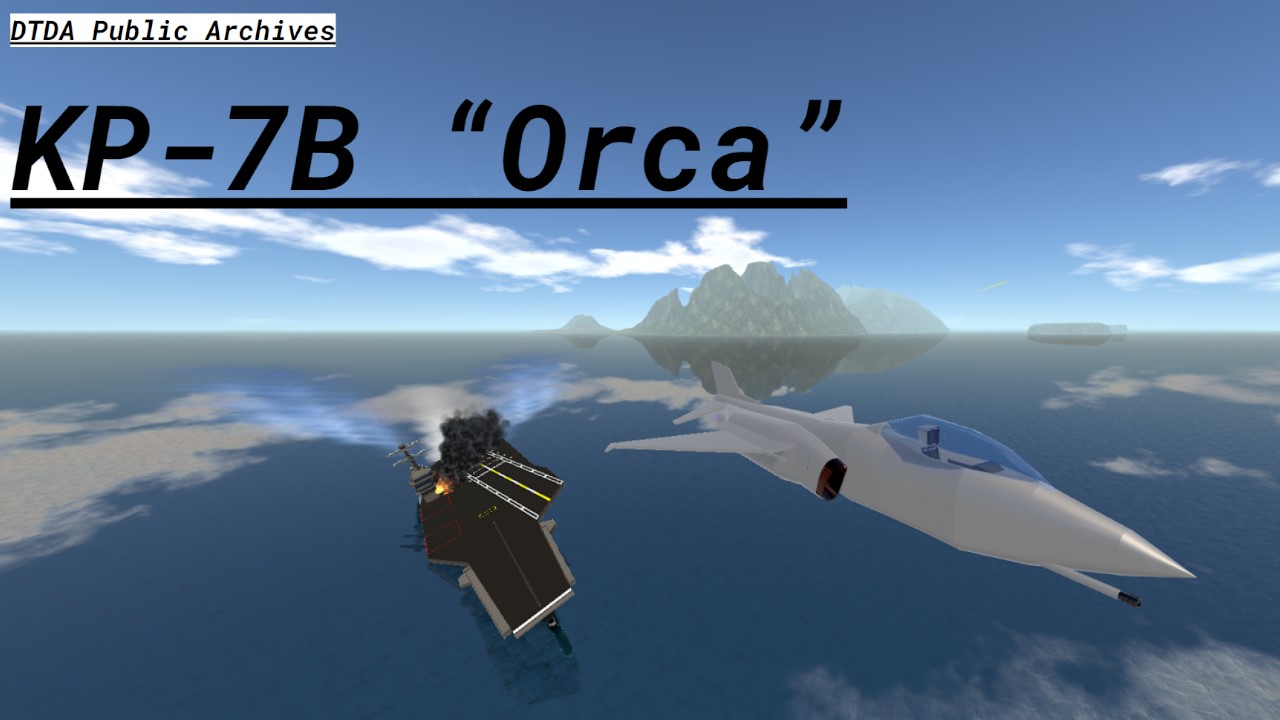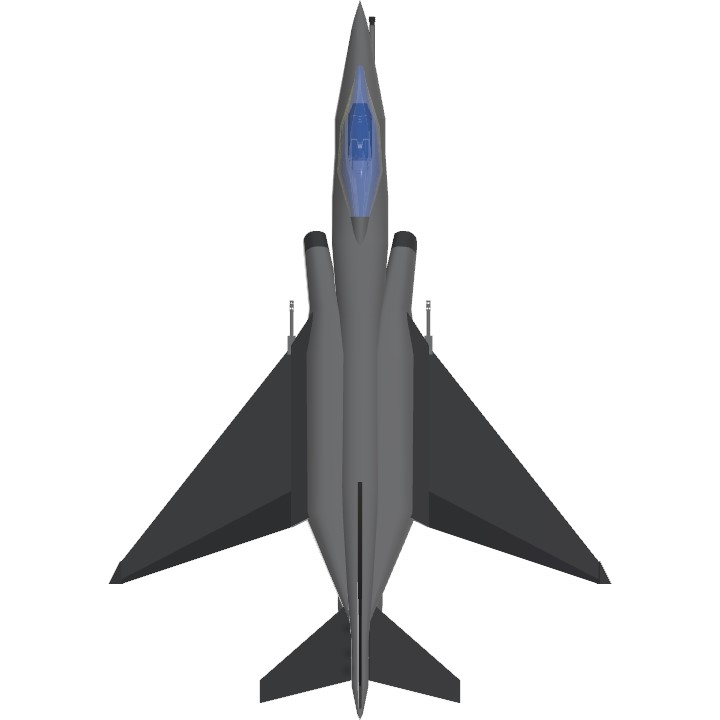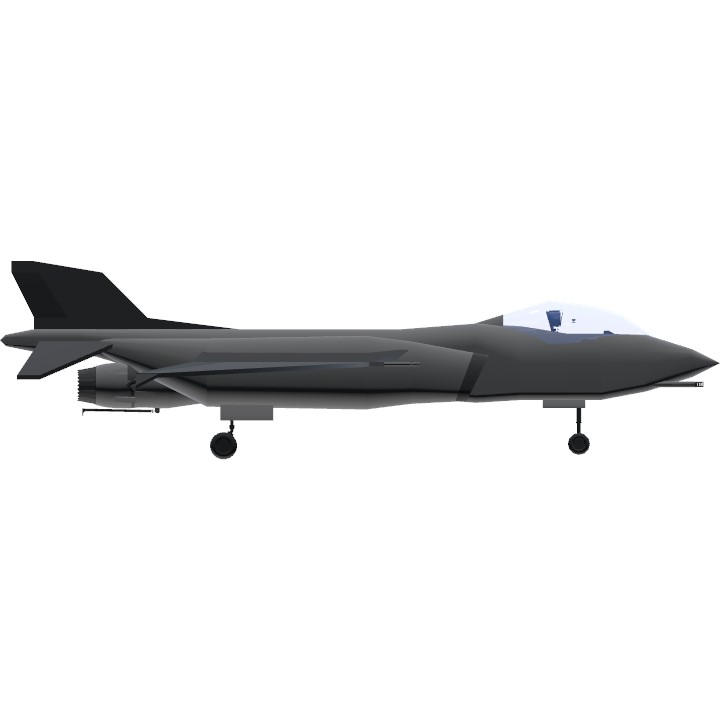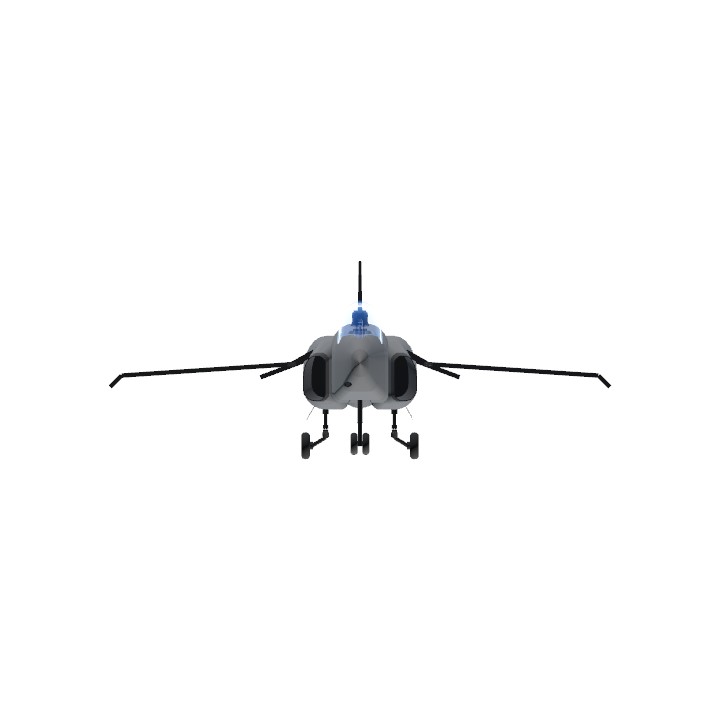CONTROLS
- Standard
- VTOL = Flaps
- Activate 1 = Arresting Hook
AWCT Lore
Be Sure to Look at Both the KP-7A and the KP-7B! They both have different "War Stories" tied to their post!
The DTC was known to be up to decades ahead of the rest of the world in their Aviation technology, but nowhere else was this more apparent than during the Second World War. Ever since the fighting began in Pacifica, the DTC knew they had to step up their aircraft, and in the year of 1942 they did it. The KP-7 (Killing Plane 7) series of aircraft were comparable to the 2nd generation of fighters, created by the ever brilliant James Federal Company, the KP-7 was a force to be reckoned with in the Second World War, with a blistering speed that broke the sound barrier and early missiles in its armament. The KP-7A Variant has a slightly weaker engine along with smaller wings and elevators and was designed for the Democratic Territories Air Force. The KP-7B Variant of the KP-7 has slightly larger wings and elevators, it also has an arresting hook, this variant was adapted by the Democratic Territories Navy. The KP-7 during the course of the war managed to get more air to air kills than the other top 2 aircraft combined. The KP-7 all in all was remarkably effective during the war, and even some time after it, with the USSR not catching up until later on during the 60s.
War Stories:
During the 2nd World War, Democratic Territories Navy Aircraft Carrier Edwin was damaged badly in the Theanos sea, facing certain death, they sent one last KP-7B fighter jet off the deck of the ship. Due to damage, the front of the aircraft carrier was leaning down at an angle of 16°. Lieutenant Commander Ewatin bravely climbed into his aircraft’s cockpit, low on both fuel and ammunition, he had to make decisions with precision. With the angle of the ship, Ewatin had to quickly maneuver or he’d plunge into the deep blue below. Putting the flaps all the way down and throttle to maximum, he held the brakes until the engines had fully wound up to top speed. Shooting off of the carrier, Ewatin swung the nose upwards, directly into the flight path of a kamikaze Japanese plane, he pulled the trigger, and the Japanese craft dropped like a fly into the ocean. With only 45 seconds of ammunition and half a tank of fuel and no fuel tanks, and out of ordnance, he pushed his aircraft to the limits, zipping around like a hornet with guns blazing as soon as the nose was on a Japanese aircraft. With only a second left of ammunition and >5% fuel left, Ewatin landed back on the carrier which had lessened to 4°. At the end of the battle Ewatin had shot down 7 fighters and 3 bombers along with saving the entire fleet. Ewatin was awarded the Medal of Cascadia shortly afterwards.
Specifications
General Characteristics
- Created On Windows
- Wingspan 35.9ft (10.9m)
- Length 52.1ft (15.9m)
- Height 14.0ft (4.3m)
- Empty Weight N/A
- Loaded Weight 14,226lbs (6,453kg)
Performance
- Power/Weight Ratio 5.923
- Wing Loading 43.9lbs/ft2 (214.5kg/m2)
- Wing Area 323.8ft2 (30.1m2)
- Drag Points 4536
Parts
- Number of Parts 84
- Control Surfaces 3
- Performance Cost 567





@HydroMoney22 you basically make the base of an aircraft, like you are doing right now but upload it as u listed and tag me (@idontknow8b). Then i will add details and make it better, then you upload that. I will also add some pictures too on top of that.
@idontknow8b (Sorry if I sound like a noob, its because i am lol)
So I just make n upload, then you just add your twist? Sounds good.
@HydroMoney22 awesome! Just build a simple fighter and i can improve it and add some photosx
@idontknow8b Sure, any help is appreciated, especially for a noobie like me!
@HydroMoney22 would you want to do a collab? I haven’t done one in a while but it can help you out alot!
@HydroMoney22 of course!
@idontknow8b Thanks for the tip! In all honesty, I was under the impression that smoothing referred to drag, haha.
Nice! Make sure to use fuselage smoothing because it will make it look much more clean.